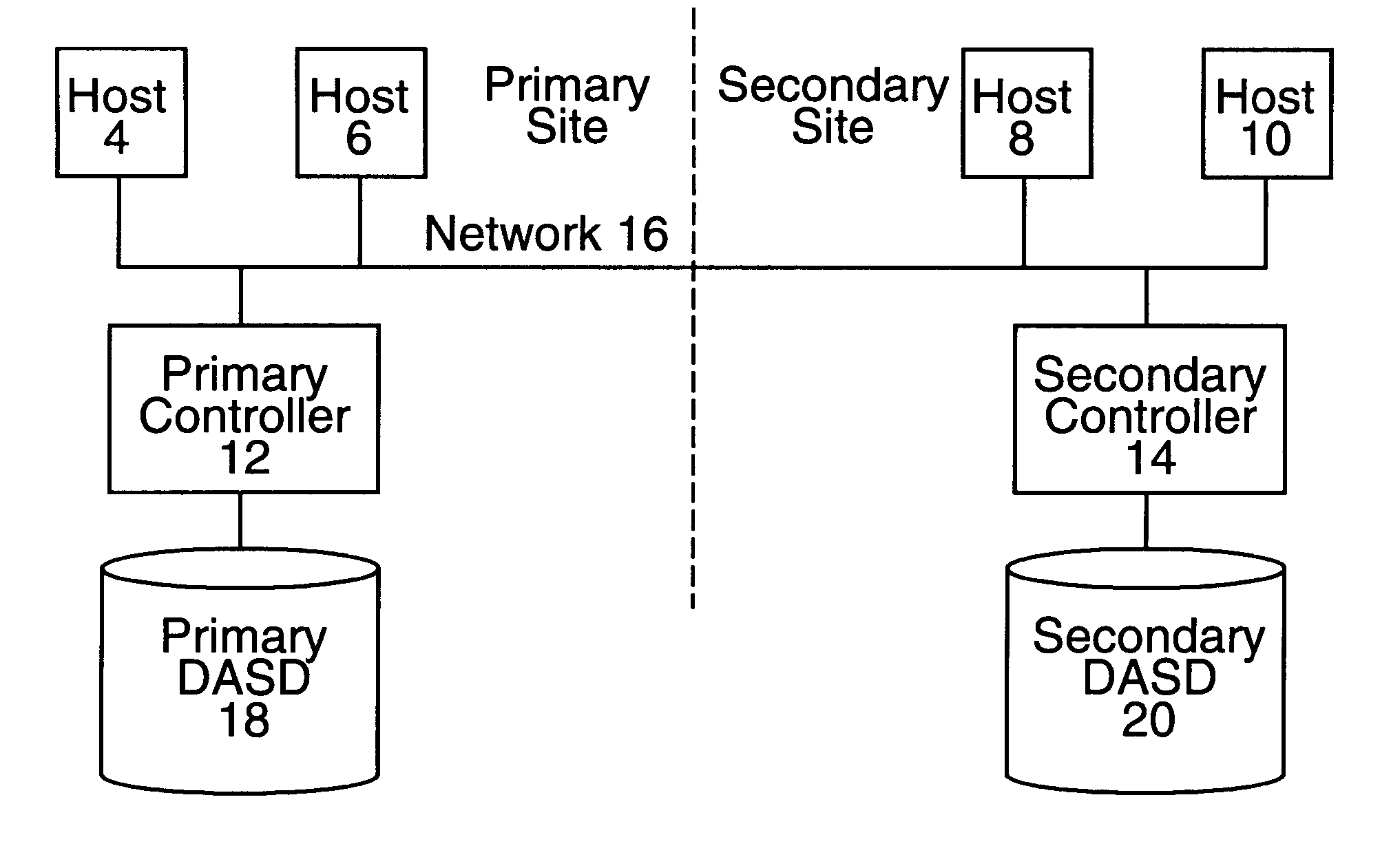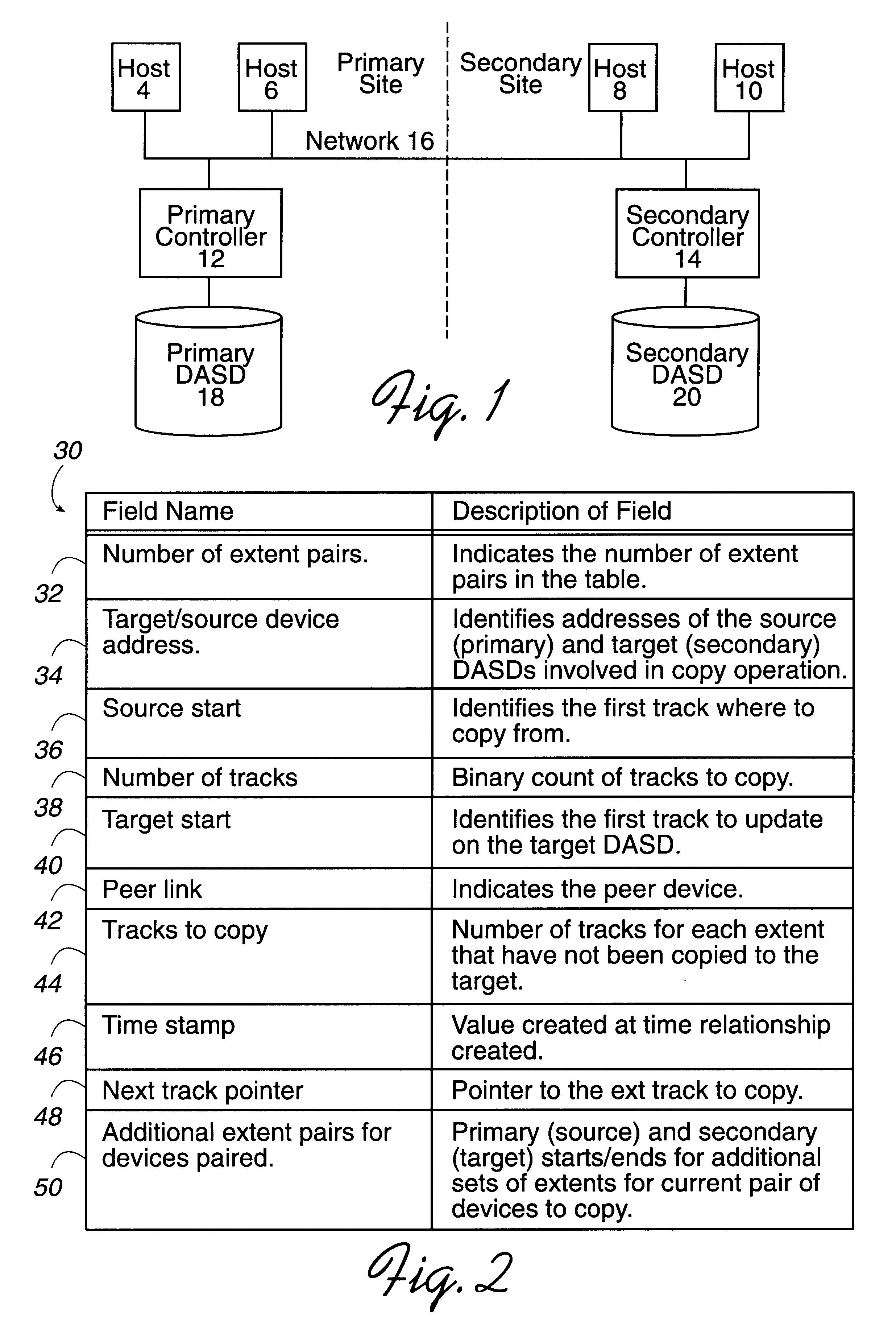Data copy between peer-to-peer controllers
a data copy and peer-to-peer technology, applied in the direction of memory adressing/allocation/relocation, redundant hardware error correction, instruments, etc., can solve the problems of less data recoverable, data updated but not backed-up, and delays in responding to volume backup requests
- Summary
- Abstract
- Description
- Claims
- Application Information
AI Technical Summary
Benefits of technology
Problems solved by technology
Method used
Image
Examples
Embodiment Construction
To overcome the limitations in the prior art described above, the preferred embodiments disclose a system for copying data sets from a first storage device to a second storage device. The first storage device is managed by a first controller and the second storage device is managed by a second controller. The first controller receives a command to copy a plurality of data sets from the first storage device to the second storage device. First and second data structures are generated to include fields corresponding to the data sets. The fields initially indicate that the data sets have not been copied. For the data sets subject to the copy command, the first controller transfers a copy of the data set to the second controller. The second controller stores the copy of the data set received from the first controller in the second storage device. The field in the first data structure corresponding to the data set copied to the second storage device is then modified to indicate that the d...
PUM
 Login to View More
Login to View More Abstract
Description
Claims
Application Information
 Login to View More
Login to View More - R&D
- Intellectual Property
- Life Sciences
- Materials
- Tech Scout
- Unparalleled Data Quality
- Higher Quality Content
- 60% Fewer Hallucinations
Browse by: Latest US Patents, China's latest patents, Technical Efficacy Thesaurus, Application Domain, Technology Topic, Popular Technical Reports.
© 2025 PatSnap. All rights reserved.Legal|Privacy policy|Modern Slavery Act Transparency Statement|Sitemap|About US| Contact US: help@patsnap.com



